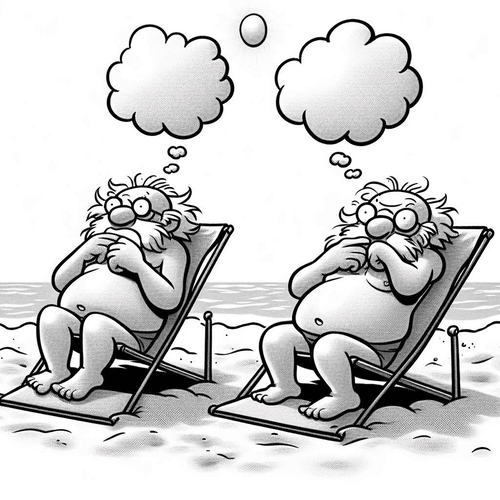Rethinking Sickle Cell Anaemia: A Case for Intelligent Design
Sickle cell anaemia presents what many consider evolution’s strongest card—a genetic condition that causes suffering yet provides protection against malaria. Evolutionary theory points to this as clear evidence of beneficial mutation through natural selection. But does this familiar narrative hold up under closer examination? A deeper look at the molecular mechanisms reveals something far more extraordinary: evidence of intelligent design operating at levels of complexity that random processes cannot adequately explain.
Sickle cell anaemia isn’t contagious—it’s an inherited genetic condition passed on from parents to children through their genes. A person must inherit the sickle cell gene from both parents to develop the full disease, while inheriting it from only one parent results in sickle cell trait (which provides malaria protection without causing disease). This inheritance pattern follows precise genetic laws that demonstrate the orderly, rule-based nature of biological systems rather than random processes.
THE MOLECULAR MARVEL OF HAEMOGLOBIN
To understand sickle cell anaemia, we must first appreciate the breathtaking complexity of normal haemoglobin. This protein consists of 574 amino acids arranged in precise three-dimensional configurations, with four separate chains working in perfect harmony. Each haemoglobin molecule contains four iron atoms positioned exactly where needed to bind oxygen molecules. The margin for error is virtually zero—change just one amino acid in the wrong position, and the entire system fails.
This level of molecular precision speaks to intentional design. The haemoglobin molecule represents what biochemists call “irreducible complexity”—a system where all parts must be present and properly arranged for function to occur. Random mutations typically destroy such systems rather than improve them, yet sickle cell anaemia presents us with a variant that maintains basic function while adding an entirely new capability.
THE MALARIA PROTECTION PARADOX
The sickle cell trait provides remarkable protection against malaria, one of humanity’s deadliest diseases. When malaria parasites invade red blood cells carrying the sickle cell variant, the cells change shape and become inhospitable to the parasite. This protection is so effective that people with sickle cell trait have up to 90% reduced risk of severe malaria.
Here’s where the evolutionary explanation becomes problematic. For a random mutation to simultaneously maintain haemoglobin’s oxygen-carrying function while also providing specific anti-malarial protection requires an extraordinary series of coincidences. The variant must preserve the protein’s complex folding patterns, maintain iron coordination, allow normal oxygen binding and release, yet also create conditions hostile to malaria parasites. This level of multi-functional precision suggests foresight rather than accident.
THE BALANCED SYSTEM: EVIDENCE OF ENGINEERING
Perhaps most compelling is the heterozygote advantage—the fact that carrying one copy of the sickle cell gene provides malaria protection without causing disease. This represents a perfectly balanced system where too little provides no benefit, and too much causes harm. Such precise calibration is the hallmark of intelligent engineering.
Consider the geographic distribution: sickle cell variants occur at highest frequencies in regions where malaria is endemic. This correlation extends across Africa, parts of Asia, and the Mediterranean—areas that share malaria exposure but are otherwise genetically distinct. The precision of this geographic matching suggests purposeful placement rather than random occurrence.
INFORMATION THEORY AND GENETIC DESIGN
From an information theory perspective, sickle cell anaemia represents a fascinating case study. The condition results from a single nucleotide change that alters one amino acid in the beta-globin chain. Yet this minimal change in genetic information produces cascading effects throughout multiple biological systems—affecting not just haemoglobin structure, but also red blood cell shape, membrane properties, oxygen affinity, and pathogen resistance.
This is precisely what we’d expect from intelligently designed systems: maximum functional output from minimal informational input. The variant doesn’t represent new genetic information being created, but rather existing information being expressed differently—like a switch being flipped to activate a different programme already present in the system.
THE FALL AND CORRUPTION FRAMEWORK
The creationist worldview provides a coherent framework for understanding genetic conditions such as sickle cell anaemia. In an originally perfect creation, genetic systems would have functioned flawlessly. The reality of suffering and disease reflects the corruption that entered the world through the Fall, when creation itself became subject to decay and malfunction.
Yet even in this fallen state, we see evidence of the original design’s robustness. The sickle cell system demonstrates how created genetic networks can maintain function even when corrupted, and how built-in contingencies can provide protection against threats that emerged in a fallen world. The fact that the variant provides malaria protection suggests the original genetic design included adaptive mechanisms for dealing with pathogens.
BEYOND SIMPLE MUTATION
The standard evolutionary narrative treats sickle cell anaemia as a simple beneficial mutation, but the reality is far more complex. The variant affects multiple biological pathways simultaneously, influences gene expression patterns, and interacts with numerous other genetic and environmental factors. This level of system integration cannot be adequately explained by random mutation acting on individual genes.
Instead, we see evidence of designed genetic switches and regulatory networks that can respond to environmental challenges. The sickle cell variant may represent the activation of contingency programming rather than the creation of new information through mutation. This perspective aligns with our understanding of other genetic systems that show remarkable adaptability within designed parameters.
MEDICAL IMPLICATIONS AND HOPE
Acknowledging intelligent design in sickle cell anaemia doesn’t diminish the real suffering it causes or reduce the urgency of finding treatments. Instead, it provides a framework for understanding why certain therapeutic approaches work and points toward restoration of original design intent.
Current treatments like hydroxyurea work by reactivating foetal haemoglobin production, essentially switching the system back to an earlier, more functional state. Gene therapy approaches aim to correct the variant, restoring the original genetic sequence. These medical interventions succeed because they work with the underlying design rather than against it.
RETHINKING SICKLE CELL ANAEMIA: THE BIGGER PICTURE
Sickle cell anaemia, rather than challenging intelligent design, actually provides compelling evidence for it. The condition demonstrates molecular complexity, multi-functional integration, precise geographic distribution, and system-level robustness that random processes cannot adequately explain. The variant maintains sophisticated function while providing specific protection against a deadly pathogen—a level of multi-purpose engineering that points to intentional design.
This perspective doesn’t deny the reality of suffering or the need for medical intervention. Instead, it provides hope that understanding design principles can lead to better treatments and ultimately to restoration of the original design intent. In sickle cell anaemia, we see not just the tragedy of a fallen world, but also the remarkable resilience of intelligently designed biological systems.
In rethinking sickle cell anaemia, we find not evolution’s strongest argument, but rather a powerful testimony to the intelligence that designed the biological world with such remarkable foresight and engineering excellence.
RETHINKING SICKLE CELL ANAEMIA: RELATED FAQs
What physical pain do people with sickle cell anaemia actually experience? Sickle cell crises cause excruciating pain episodes that can last for days or weeks, often described as feeling like bones are being crushed or broken from the inside. The sickled cells block blood flow in small vessels, causing tissue damage and severe pain in bones, chest, abdomen, and joints. Many patients require strong opioid medications and hospitalisation during such crises, with some experiencing chronic pain even between acute episodes.
- How does sickle cell anaemia affect life expectancy and quality of life? People with sickle cell anaemia typically have shortened lifespans, with many dying in their 40s or 50s due to complications such as stroke, organ failure, or infections. Daily life is often interrupted by fatigue, pain, and medical appointments, making it difficult to maintain normal work, school, or social activities. The unpredictable nature of pain crises creates additional psychological stress and social isolation for patients and their families.
- If God designed this system, why does it cause so much suffering? The creationist perspective holds genetic conditions like sickle cell anaemia result from the corruption of an originally perfect creation after the Fall. While the underlying haemoglobin system shows evidence of intelligent design, the suffering it causes reflects the broken state of our world. This tension between design evidence and human suffering points to the need for restoration and healing, which we pursue through medical research and treatment.
How do other genetic blood disorders compare to sickle cell anaemia in terms of design arguments? Thalassemia, another haemoglobin disorder, also shows geographic correlation with malaria zones and provides some pathogen resistance, suggesting similar design principles. G6PD deficiency follows the same pattern—causing health problems but providing malaria protection in certain regions. These multiple examples of geographically-targeted genetic variants with dual functions strengthen the argument for purposeful design rather than random beneficial mutations.
- What about the evolutionary argument that sickle cell proves natural selection works? The evolutionary argument assumes random mutation created the sickle cell variant, but this doesn’t account for the remarkable precision required to maintain haemoglobin function while adding anti-malarial properties. Natural selection can explain why a beneficial trait spreads through a population, but it cannot explain how such a complex, multi-functional system arose in the first place. The evidence suggests activation of pre-existing genetic programs rather than creation of new information through random processes.
- How do modern gene therapies support or challenge the intelligent design perspective? Gene therapies that successfully treat sickle cell anaemia work by restoring the original genetic sequence or reactivating foetal haemoglobin production—essentially returning the system to its designed state. The fact that these restoration-based approaches work better than attempts to create entirely new solutions supports the idea that we’re dealing with corrupted but originally well-designed systems. This therapeutic success suggests that understanding design principles leads to more effective treatments.
Are there any environmental factors that make sickle cell symptoms worse or better? Dehydration, extreme temperatures, high altitudes, and physical stress can trigger sickle cell crises by affecting oxygen levels and blood flow. Interestingly, some patients report fewer crises in certain climates or when following specific dietary practices, suggesting the system responds to environmental inputs in predictable ways. This environmental sensitivity indicates sophisticated regulatory mechanisms that, while sometimes problematic in a fallen world, demonstrate the intricate design of biological systems that can respond dynamically to changing conditions.
RETHINKING SICKLE CELL ANAEMIA: OUR RELATED POSTS
- DNA Repair Mechanisms: Engineering Marvel or Random Chance?
- The Human Knee: Where Evolution’s Kneejerk Explanations Fail
- The Inverted Retina: Design Flaw Or Optimal Engineering?
- The Ankle and Feet: A Miracle of Precision Engineering
- DNA Evidence for Intelligent Design: New Challenges for Evolution
- Human Immunology: Evidence of Design in Our Defence Systems
- Nature’s Ultimate Computer: The Human Brain Defies Evolution
- Haemoglobin Screams Design: A Miracle in Every Breath
Editor's Pick

GPS Without Eyes: How Ants Silently Shout Intelligent Design
Picture a leafcutter ant navigating the rainforest floor in pitch darkness, carrying a leaf fragment 50 times its body weight. [...]

Born Broken: Why Must We Affirm Original Sin?
Imagine a world where we’re born neutral—free to choose good, and without a bias toward evil. Sounds appealing… until we [...]

Does God Truly Care About My Everyday Choices?
OWe believe God created the universe. We believe He orchestrated the exodus from Egypt and raised Jesus from the dead. [...]
SUPPORT US:
Feel the Holy Spirit's gentle nudge to partner with us?
Donate Online:
Account Name: TRUTHS TO DIE FOR FOUNDATION
Account Number: 10243565459
Bank IFSC: IDFB0043391
Bank Name: IDFC FIRST BANK






